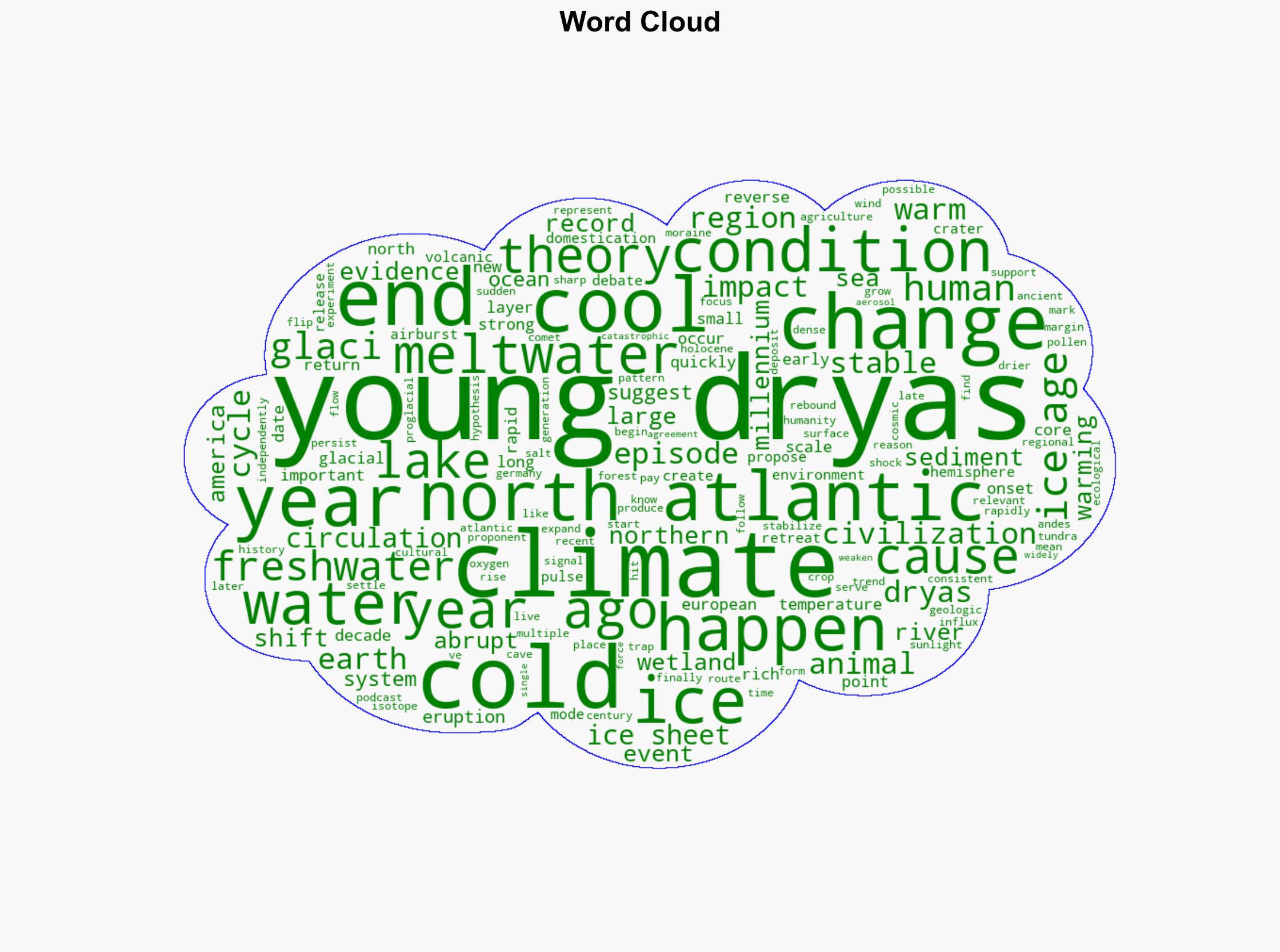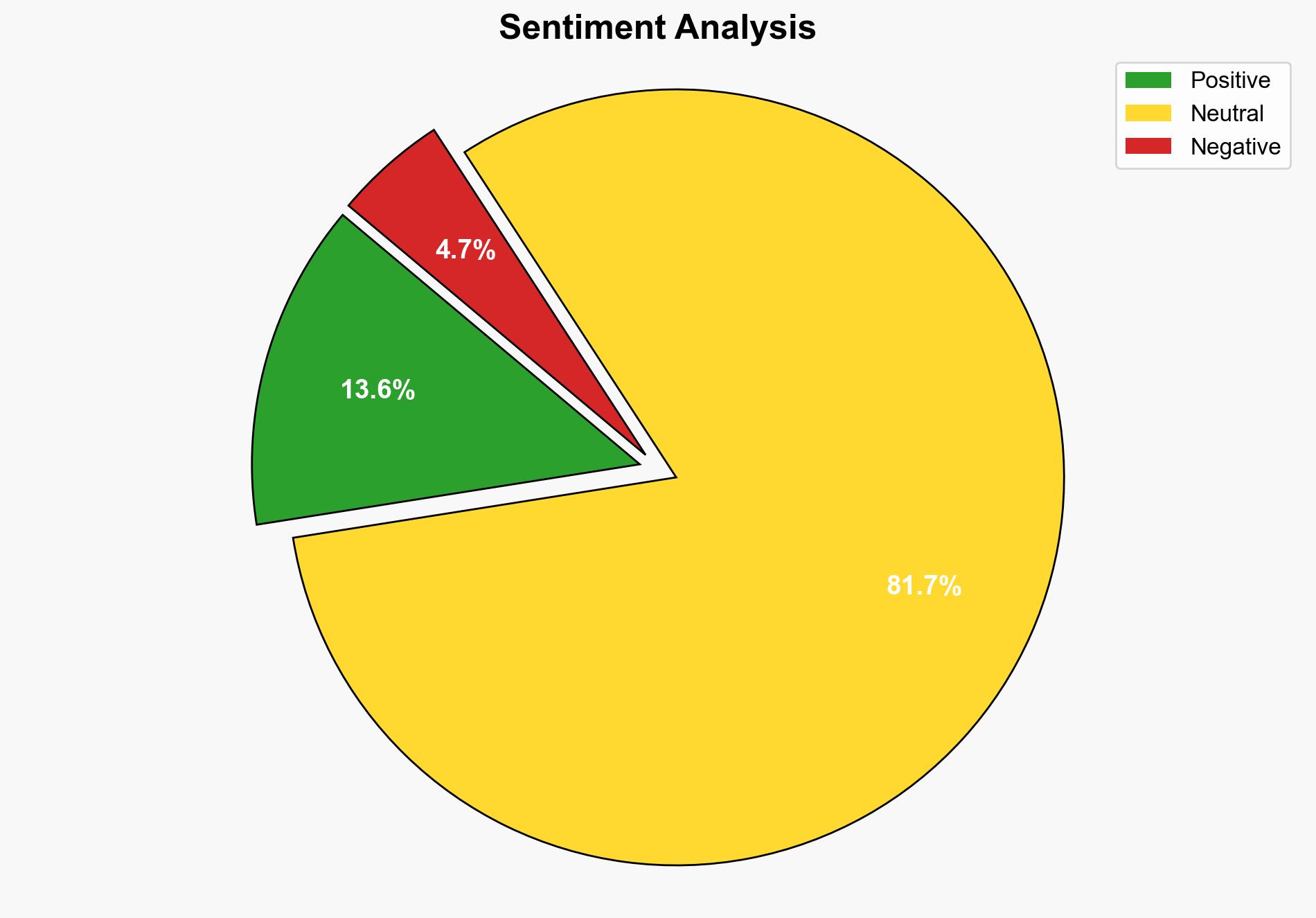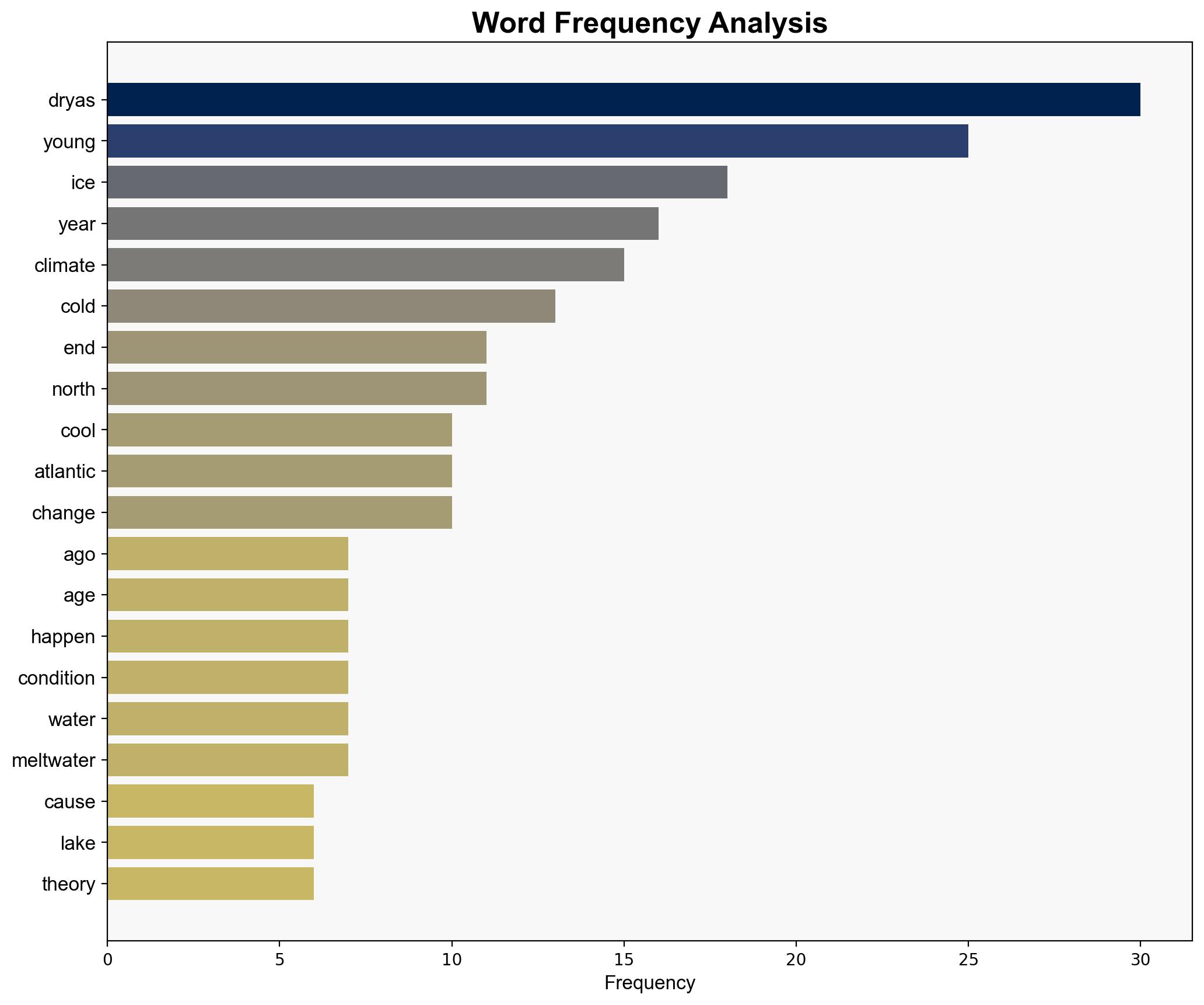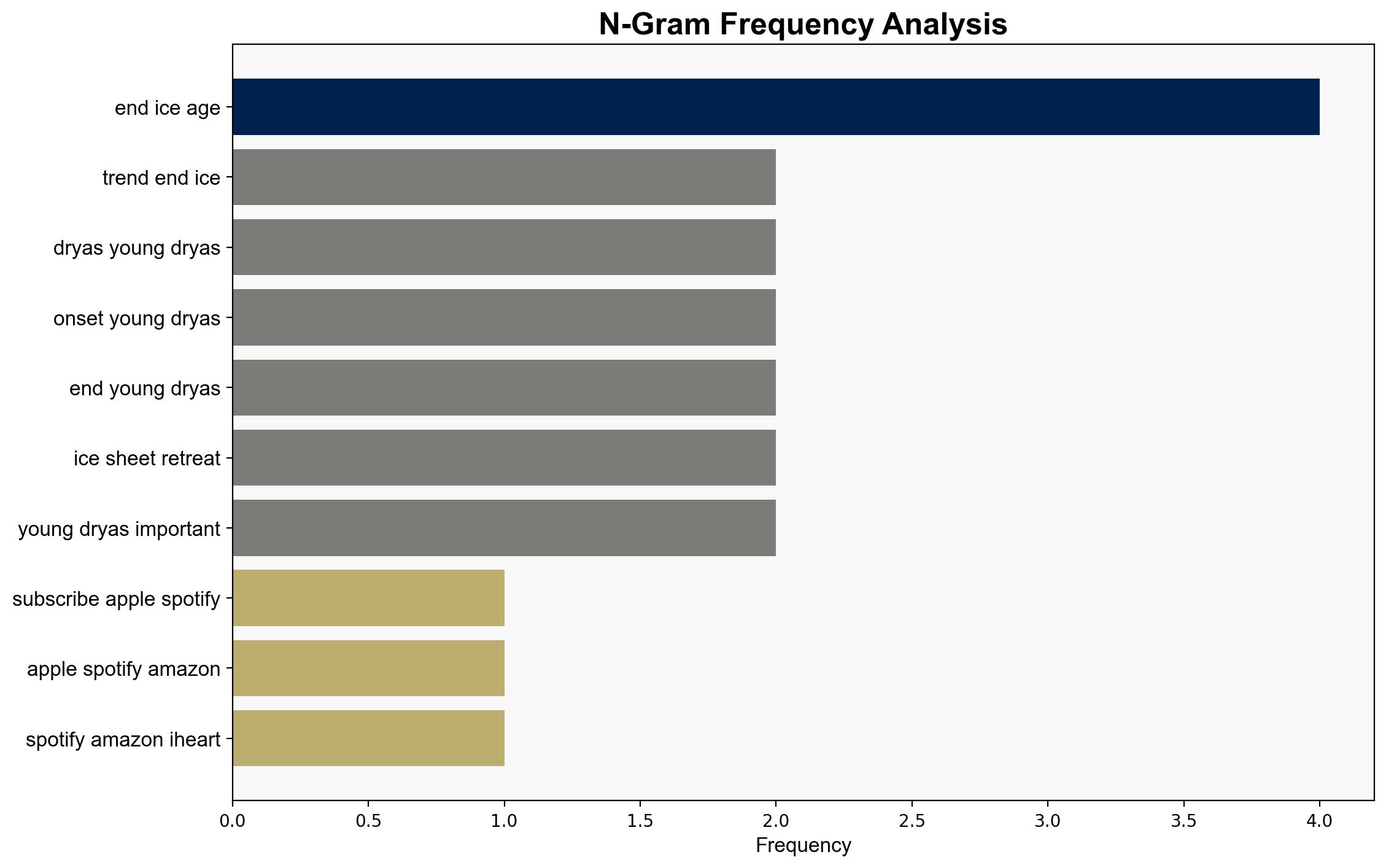The Younger Dryas – Everything-everywhere.com
Published on: 2025-10-22
Intelligence Report: The Younger Dryas – Everything-everywhere.com
1. BLUF (Bottom Line Up Front)
The Younger Dryas represents a significant climatic event with potential implications for understanding current and future climate shifts. The most supported hypothesis is that the Younger Dryas was triggered by a sudden influx of freshwater into the North Atlantic, disrupting oceanic circulation patterns. Confidence in this hypothesis is moderate due to corroborating paleoclimate data, but uncertainties remain regarding the precise mechanisms. Recommended action includes further interdisciplinary research to refine climate models and assess potential modern analogs.
2. Competing Hypotheses
1. **Freshwater Influx Hypothesis**: The Younger Dryas was caused by a sudden influx of freshwater into the North Atlantic, possibly from the melting of ice sheets or a glacial lake outburst, disrupting the thermohaline circulation and causing a rapid cooling.
2. **Extraterrestrial Impact Hypothesis**: The cooling event was triggered by an extraterrestrial impact, such as a comet or asteroid, which led to atmospheric changes and a subsequent cooling period.
Using the Analysis of Competing Hypotheses (ACH) 2.0, the freshwater influx hypothesis is better supported by multiple lines of paleoclimate evidence, such as ice core data and sediment records, which indicate a rapid climate shift consistent with oceanic circulation disruption.
3. Key Assumptions and Red Flags
– **Assumptions**: The freshwater influx hypothesis assumes a direct causal link between freshwater input and oceanic circulation changes. The extraterrestrial impact hypothesis assumes a significant atmospheric alteration from an impact event.
– **Red Flags**: Lack of direct evidence for a specific impact event during the Younger Dryas period. Potential bias in interpreting paleoclimate data due to limited resolution or dating inaccuracies.
– **Blind Spots**: Insufficient exploration of alternative natural mechanisms that could have caused similar climatic effects.
4. Implications and Strategic Risks
Understanding the Younger Dryas is critical for projecting future climate scenarios, particularly concerning abrupt climate shifts. Misinterpretation of past events could lead to inadequate preparation for potential rapid climate changes. The event highlights the vulnerability of human societies to sudden environmental changes, which could have cascading effects on global stability, agriculture, and resource management.
5. Recommendations and Outlook
- Enhance interdisciplinary research efforts to improve the resolution of paleoclimate data and refine climate models.
- Develop scenario-based planning for abrupt climate changes, focusing on resilience in agriculture and infrastructure.
- Best-case scenario: Improved understanding leads to better predictive models and proactive adaptation strategies.
- Worst-case scenario: Misinterpretation of data results in unpreparedness for rapid climate shifts.
- Most likely scenario: Incremental advancements in climate science improve long-term strategic planning.
6. Key Individuals and Entities
No specific individuals are mentioned in the source text. The focus is on scientific communities and interdisciplinary research groups studying paleoclimate events.
7. Thematic Tags
climate change, paleoclimate research, environmental resilience, interdisciplinary studies




